Initiating a Small Composting Bucket: A Practical Guide
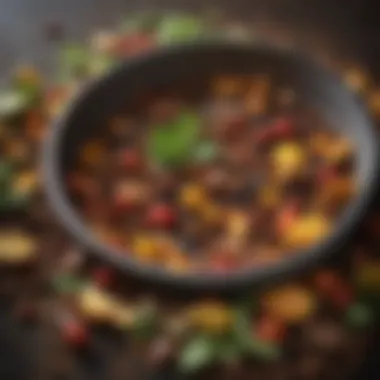
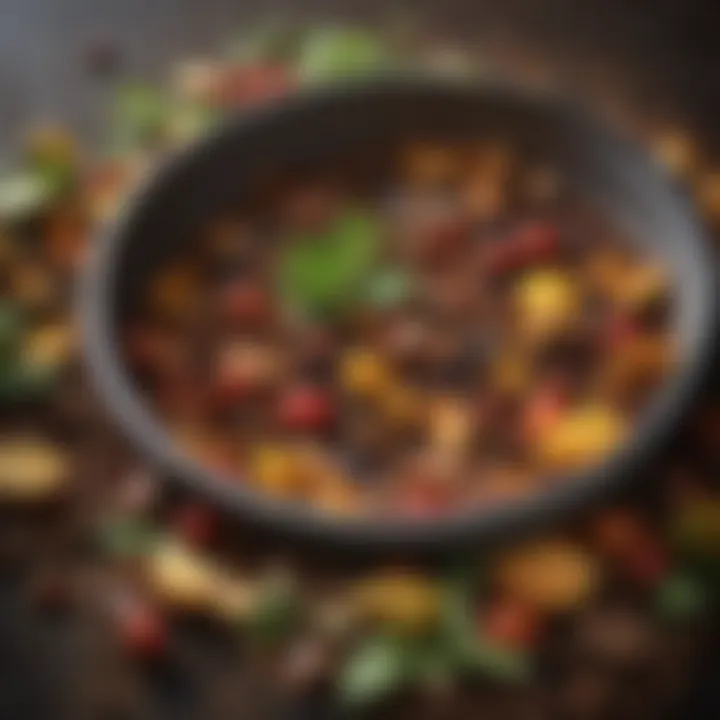
Intro
Composting has become an increasingly important part of sustainable living. Starting a small composting bucket can transform kitchen scraps and yard waste into nutrient-rich soil, valuable for any garden. This guide outlines the essential steps for setting up your composting system, addressing difficulties you may encounter, and discussing the scientific principles behind composting. The knowledge gained here can aid individuals in enhancing their gardening efforts and contribute to environmental conservation.
The concept of composting is simple yet impactful. By recycling organic material, one not only minimizes waste but also enriches soil health. This article aims to empower readers with practical insights into composting, demystifying the process and showcasing its advantages.
Setting the Right Foundation
Understanding Composting
Composting is the process of breaking down organic material. This process occurs naturally as microorganisms, such as bacteria and fungi, decompose materials in a controlled environment. The end product, compost, is rich in nutrients that benefit garden soil. Understanding the basics of this process is crucial for anyone looking to engage in composting.
Materials You Need
Setting up a composting system requires some basic materials:
- Composting Bucket: Choose a container that is easy to aerate and manage.
- Brown Materials: These include dry leaves, cardboard, and paper.
- Green Materials: Incorporate fruits, vegetables, grass clippings, and coffee grounds.
- Water: Moisture is key for breaking down materials.
The Process
Layering Your Compost
Start with a layer of brown materials at the bottom of your bucket. This layer aids in aeration, which is essential for composting. Follow up with a green layer, creating a balance between carbon and nitrogen. Continue this layering until your bucket is full.
Monitoring Conditions
It's vital to ensure the right moisture and air levels in your compost bucket. If conditions are too dry, add water. If it becomes overly wet, mix in more brown materials to absorb excess moisture. Turning the compost every few weeks can help aerate and speed up the breakdown process.
"Proper management of a small composting system can yield compost in a few months."
Benefits of Composting
Composting is not just beneficial for the garden; it also plays a significant role in reducing landfill waste. By composting, individuals can divert a substantial amount of organic waste from landfills.
Environmental Impact
The creation of compost helps to improve soil health, which in turn supports local ecosystems. Healthy soil can hold more water, leading to less runoff and erosion. In addition, compost can enhance the soil's ability to store carbon, helping to mitigate climate change.
Addressing Common Challenges
Composting may come with its challenges. Issues such as unpleasant odors or pests can arise if the balance of materials is not maintained. Ensuring a mix of green and brown materials, monitoring moisture, and occasionally turning the compost can help alleviate these problems.
By initiating a small composting bucket, you take a significant step toward sustainable living. This practice not only enriches your garden but also fosters a deeper connection with nature and contributes to a healthier planet.
Understanding Composting
Composting is a fundamental practice in sustainable waste management and soil enhancement. By understanding composting, individuals can significantly reduce the waste they produce and enrich the soil in their gardens. This section will dive into the definition, importance, and environmental benefits of composting, which paves the way for initiating a successful small composting bucket at home.
Definition of Composting
Composting is the natural process of recycling organic matter, such as food scraps and yard waste, into a valuable fertilizer known as compost. This process occurs when microorganisms break down decomposing materials in the right conditions of moisture, temperature, and aeration. The product, compost, can be used to improve garden soil, providing essential nutrients for plants.
Importance of Composting
The importance of composting cannot be overstated. It serves multiple roles in aiding the environment and individual gardening practices. Firstly, it helps manage organic waste, diverting it from overflowing landfills. Secondly, it fosters a closed-loop system that recycles nutrients. Instead of purchasing synthetic fertilizers which may harm the ecosystem, compost provides a natural, sustainable alternative.
In addition, composting promotes a hands-on approach to gardening and environmental stewardship. It encourages individuals to be more mindful of their waste and its implications. The act of composting can teach valuable lessons about ecology, biodegradation, and the interdependence of living organisms.
Benefits for the Environment
Composting offers numerous benefits, making it a vital practice for ecological conservation. Some key environmental benefits include:
- Reduction in Landfill Waste: Composting diverts organic waste from landfills, reducing the need for landfill expansion and lowering greenhouse gas emissions.
- Soil Enrichment: Compost enriches soil health, improving its structure, aeration, and moisture retention. Healthy soil supports biodiversity and contributes to the resilience of ecosystems.
- Reduction in Chemical Use: By using compost, gardeners can minimize reliance on chemical fertilizers, which can contaminate water sources and harm the soil life.
- Carbon Sequestration: Healthy soil enhanced by compost can sequester carbon, thus playing a role in combating climate change.
"Creating a composting system is not just about reducing waste; it’s about building a sustainable future."
In summary, understanding composting lays the foundation for effective home composting practices. Readers equipped with this knowledge are better positioned to make informed choices that benefit both their gardens and the environment.
Selecting the Right Compost Bucket
Selecting the right compost bucket is a fundamental step in starting a successful composting journey. The type and size of the bucket can influence the efficiency of the composting process and determine how well it fits into your lifestyle and garden space. Understanding your composting needs before making a selection will enhance your engagement with the composting process.
Types of Compost Buckets
There are several types of compost buckets available in the market, each designed with specific purposes in mind. Here are a few notable options:
- Kitchen Compost Bins: These are usually smaller and designed for collecting food scraps. They often come with charcoal filters to minimize odors. Ideal for those who want to compost without a large outdoor setup.
- Outdoor Compost Tumblers: These are larger, rotating bins that facilitate aeration and faster decomposition. They are convenient for handling larger amounts of organic waste.
- Traditional Compost Bins: Typically made of wood or durable plastic, these bins allow for piling up organic material. They require regular turning to aerate the compost.
- Worm Bins (Vermicomposting): These bins house worms that break down organic matter quickly. While not traditional composting, they are an effective way to recycle nutrients from kitchen waste.
Choosing the right type depends on your available space, the volume of waste you produce, and your willingness to manage the bin.
Choosing the Appropriate Size
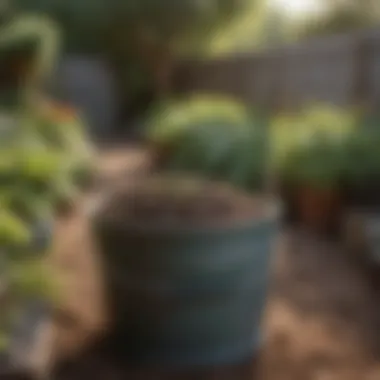
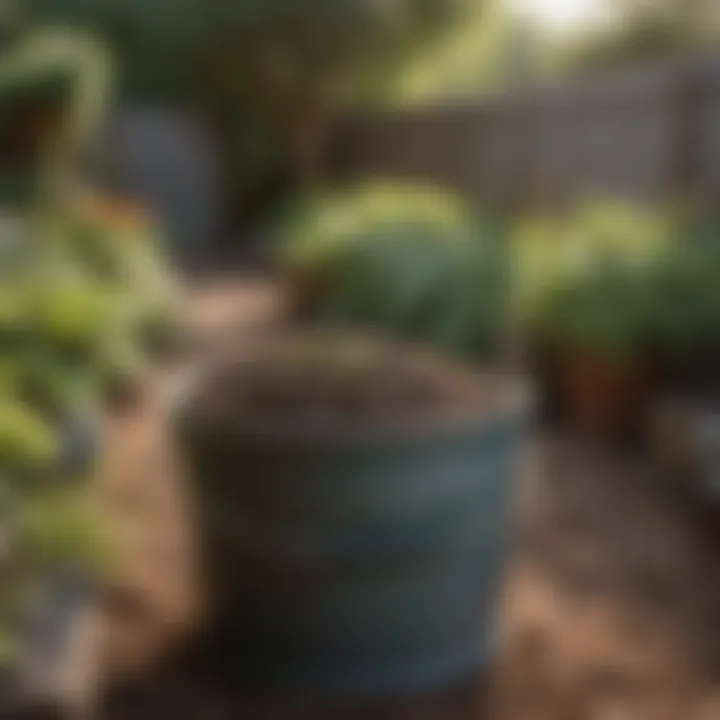
Size matters when it comes to compost buckets. If your bucket is too small, it may fill up quickly, hindering your composting efforts. Conversely, a bucket that is too large can become unwieldy and may lead to overwhelming amounts of compost to manage. Here are some considerations for size selection:
- Family Size: For a small household, a 1 to 5-gallon kitchen bin is usually sufficient. Larger families may require bins up to 10 gallons or more.
- Frequency of Composting: If you plan to compost regularly, opt for larger bins to accommodate ongoing waste generation.
- Available Space: Assess the space in your kitchen or yard. Ensure there's enough room for the bucket without overcrowding your environment.
Material Considerations
The material of your compost bucket also impacts both its functionality and durability. Consider these options:
- Plastic: Lightweight and resistant to moisture, plastic bins are popular but can wear over time. Look for BPA-free and UV-resistant options for longevity.
- Wood: Wooden compost bins are environmentally friendly but may not stand up against moisture as well as plastic. Treatment options can increase lifespan but should be non-toxic.
- Metal: Metal bins offer durability and a sleek aesthetic, but they may rust if not properly coated.
In summary, selecting the right compost bucket involves critical consideration of its type, size, and material. Each choice holds importance in influencing both ease of use and effectiveness in composting efforts.
"Composting is not just about managing waste; it is an opportunity to enhance soil quality and promote better gardening practices."
Combining these elements allows you to set the stage for a successful and rewarding composting experience.
Essential Composting Ingredients
Understanding the right ingredients is fundamental for successful composting. The composition of your compost directly impacts its quality and speed of decomposition. A well-balanced mix of materials encourages the right microbial activity, which is essential for breaking down organic matter efficiently. Knowing what to include enhances the benefits of composting, yielding nutritious soil for your garden.
Green Materials
Green materials are rich in nitrogen. They play a crucial role in the composting process. Examples include food scraps, grass clippings, and fresh leaves. These items provide the necessary nutrients that microbes require for their growth. For effective composting, aim to use a variety of green materials. Here are some commonly used ones:
- Vegetable peels
- Coffee grounds
- Eggshells
- Fresh cut grass
Using these materials helps to speed up the decomposition. However, balance is key. Too many greens can lead to a slimy compost pile, which is not ideal.
Brown Materials
Brown materials are high in carbon, adding structure to the compost. They help aerate the pile and promote drainage. Examples include dry leaves, straw, and cardboard. Brown materials are essential for maintaining the carbon-to-nitrogen ratio. Here is a list of suitable brown materials:
- Dried leaves
- Small branches
- Cardboard pieces
- Shredded paper
Incorporating sufficient brown materials can prevent odors by ensuring proper airflow. It also retains moisture, which is necessary for microbial action.
What to Avoid
Certain materials should never be added to your compost bucket. They can create issues like odors, pests, or even harmful pathogens. Avoid these items:
- Meat and dairy products
- Oils and fats
- Pet waste
- Diseased plants
By steering clear of problematic materials, you ensure a smoother composting process. Keeping your compost clean and balanced leads to better results, both in terms of decomposition and the quality of the finished product.
Setting Up Your Compost Bucket
Establishing a small compost bucket is a fundamental step for anyone interested in home composting. The setup process lays the groundwork for successful composting. It is not just about having a container; it involves understanding how to create an environment where organic materials can decompose effectively. Proper setup ensures that your composting efforts yield maximum benefits, making it crucial for both the gardener and the environment.
Placement of the Bucket
The location of your compost bucket is important and can impact the composting process. Choose a spot that is easily accessible yet discreet, as it may not always be visually appealing. Ideally, the location should receive partial sunlight. This warmth helps speed up decomposition, especially on cooler days. However, while sunlight can be beneficial, direct, intense light should be avoided since it may dry the materials too quickly.
Consider placing your bucket near your kitchen or garden for convenience. It reduces the effort of transporting organic waste from one place to another. Ensure the area is well-drained to prevent any water buildup, which could lead to sour odors and unwanted pests.
- Avoid Areas: Steer clear of areas with excessive moisture or shade, like beneath dense trees.
- Accessibility: Make sure you can easily add materials and eventually remove finished compost.
Creating a Balanced Mix
A balanced mix of materials is essential for effective composting. Compost requires a combination of green and brown materials. Greens are high in nitrogen, while browns provide carbon. This ratio is vital to maintain microbial activity during decomposition.
Strive for a rough 2:1 ratio of browns to greens. If your mix leans too heavily on greens, it may become slimy and odoriferous. If the mix has too many browns, decomposition may slow considerably. This balance is key for aeration and moisture retention, leading to faster breakdown.
- Green Materials: Kitchen scraps, fresh grass clippings, and plant trimmings.
- Brown Materials: Dried leaves, paper, and cardboard.
Keep a separate container to collect different types of organic waste. It can guide you when assembling your compost bucket.
Layering Techniques
Layering your compost is a practical technique that helps optimize aeration and moisture levels. Start with a base layer of coarse materials such as small branches or straw. This promotes airflow, reducing the likelihood of compaction.
Next, alternate between layers of greens and browns. Each layer should be about two to four inches thick. Over the course of time, add water as necessary, especially if layers appear dry. This method will minimize unpleasant odors and ensure more efficient decomposition.
- First Layer: Coarse materials for better aeration.
- Next Layers: Alternate greens and browns for balance.
Using this method, you can effectively manage your compost bucket and help each component break down systematically. The complexity of composting may seem daunting at first, yet it becomes more manageable with mindful setup and management.
Managing Composting Process
The composting process requires careful management to ensure the effective breakdown of organic materials. This stage is crucial, as it directly influences the quality and speed of decomposition. By paying attention to specific aspects such as moisture levels, mixing, and temperature, one can optimize their small composting bucket. This not only enhances the efficiency of compost production but also mitigates common challenges faced during composting.
Maintaining Moisture Levels
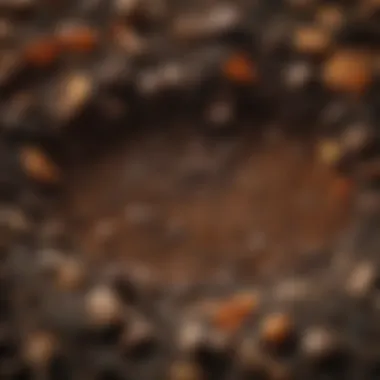
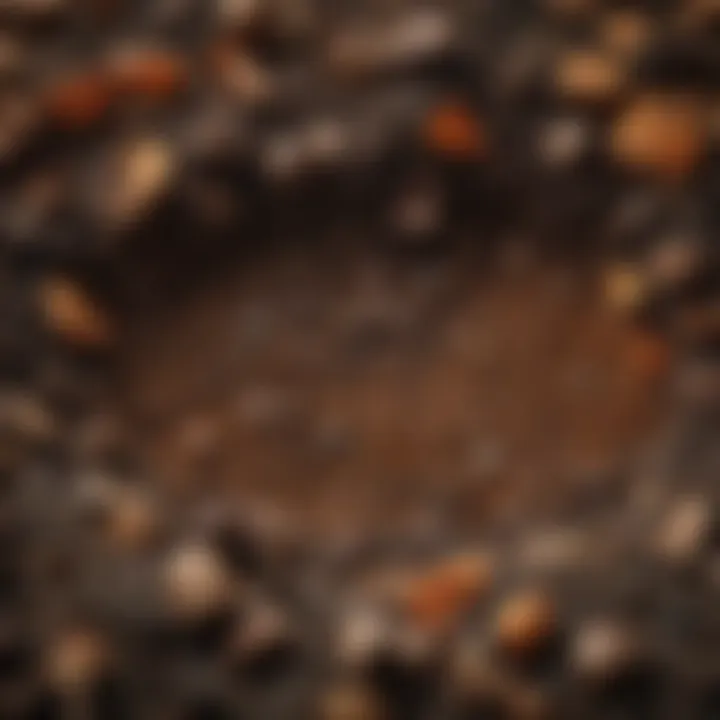
Moisture is essential in the composting process. It acts as a medium for microorganisms that break down organic matter. Keeping the right amount of moisture is crucial; too little moisture slows down decomposition, while too much can lead to anaerobic conditions, producing foul odors.
To maintain optimal moisture levels, consider these practices:
- Regularly Check Moisture: The compost should feel like a damp sponge when squeezed. If water drips out, it is too wet.
- Add Water: If the compost feels dry, sprinkle water evenly. Avoid soaking it; a light misting is often sufficient.
- Cover the Bucket: A lid can help retain moisture while protecting the compost from excessive rain.
Mixing and Turning the Compost
Mixing the compost helps aerate it, which is essential for aerobic decomposition. Aerate it regularly, ideally once a week, to ensure even breakdown of materials. Turning the compost helps to introduce oxygen and prevent clumping, which can inhibit the decomposition process.
Here are some simple methods for mixing the compost:
- Use a Garden Fork: Lift and rotate the compost gently to aerate it.
- Layering: When adding new materials, alternate between green and brown materials to maintain balance and promote aeration.
- Tumbling Composters: If available, a tumbling composter can simplify this process.
Monitoring Temperature
Temperature is another vital factor in compost management. A well-functioning compost heap can reach temperatures between 130°F and 160°F (54°C to 71°C), which helps kill pathogens and weed seeds. Monitoring the temperature allows you to assess the activity level of microorganisms in your compost.
To effectively monitor temperature:
- Use a Compost Thermometer: This tool can help track the internal temperature of the compost.
- Assess Thermal Changes: If the temperature drops significantly, it may indicate a lack of oxygen or moisture.
- Readjust: When the compost heats up too quickly, consider turning it or adding more brown materials to balance the nitrogen content.
"Managing the composting process is a blend of art and science; the variables must be adjusted based on observations and environmental conditions."
By managing these elements of the composting process attentively, individuals can create a thriving compost system that produces high-quality humus, ultimately benefiting their gardens and the environment.
Troubleshooting Common Issues
Composting can be a rewarding process, but it is not without its challenges. Understanding how to troubleshoot common issues is essential for maintaining the effectiveness of a small composting bucket. Neglecting these problems might lead to unfavorable results. Hence, attention to detail and prompt action can enhance both the composting process and final product.
Unpleasant Odors
Unpleasant odors are a frequent issue for new composters. They can stem from a variety of sources. A primary cause is an imbalance in the compost mixture. When there is too much green material, such as food scraps, it can create a nitrogen-rich environment. This leads to anaerobic conditions, which produce foul smells. To remedy this, one should introduce brown materials. Examples are dry leaves or cardboard, which help absorb some of the excess moisture and odors.
Regular turning of the compost also promotes aeration. This helps to mitigate odor-producing bacteria. Another factor to consider is moisture level. If the compost is too wet, it might amplify smells. Ensuring adequate drainage and adjusting ingredients can manage this.
To reduce unpleasant odors, strive for a balanced mix and ensure proper aeration.
Attracting Pests
Many individuals worry about pests when initiating a composting system. Unfortunately, compost heaps can attract rodents, flies, or other undesired visitors. To prevent this, one must pay close attention to what materials are added. Kitchen scraps like meat, dairy, and oily foods should be avoided as they are particularly enticing to pests.
Instead, sticking to fruits, vegetables, and yard waste can help keep pests at bay. Using a lid on the compost bucket can provide an additional barrier. Moreover, regular monitoring allows for adjustments when needed. If pests do come around, they can often be deterred by using natural repellents or employing traps.
Slow Decomposition
Slow decomposition is another common issue that composters face. This can be frustrating, especially when expecting quick results. There are several reasons for this slow process. Composts lacking sufficient air and moisture can hinder microbial activity. It is vital for the compost to maintain a certain level of moistness, akin to a damp sponge. Regular turning of the compost can improve air circulation, thereby fostering decomposition.
Another contributor to slow decomposition is the size of materials. Larger pieces take longer to break down. Cutting or shredding materials prior to adding them can facilitate quicker breakdown. Assess the composition regularly and adjust ingredients as necessary to promote a healthier compost environment.
By addressing these common issues, composters can improve their systems significantly. Optimal composting practices lead to rich, nutrient-dense compost, which can ultimately benefit gardens and the environment.
Harvesting Your Compost
Harvesting your compost is a fundamental aspect of the composting process, as it marks the transition from waste to a valuable resource. Proper harvesting ensures that nutrients are available for your plants while also allowing the composting cycle to continue. Understanding the timing, method, and benefits of harvesting compost is essential for anyone looking to enjoy the fruits of their labor.
When to Harvest
Timing plays a crucial role in the effectiveness of composting. You should generally be looking to harvest your compost after about three to six months of active composting. However, the exact time frame can vary based on several factors, including the materials used, the size of your compost bucket, and the environmental conditions.
Signs that indicate your compost is ready for harvesting include:
- Appearance: The compost should be dark brown or black, crumbly in texture, and have a pleasant earthy smell.
- Decomposition: You should not be able to recognize the original materials, such as fruit scraps or leaves. They should be broken down fully.
- Temperature: When the compost cools down and reaches ambient temperature, it is a good indicator that microbial activity has decreased, making it ready for use.
It is important not to let compost sit for too long after it has reached maturity, as it may become compacted or lose nutrients if exposed to the elements too much.
How to Collect Finished Compost
Collecting finished compost is fairly straightforward. Here are the steps you can follow to ensure an efficient and effective process:
- Prepare a Clean Workspace: Clear space in your garden or another area. Have your tools ready, such as a shovel or pitchfork and a container for your harvested compost.
- Remove the Compost Pile: Use a shovel or fork to carefully remove the top layers of the compost. You may want to avoid disturbing the unprocessed materials beneath.
- Screening: If you find larger chunks of material that have not fully decomposed, you can screen the compost through a mesh, allowing the finer particles to fall through while saving the larger pieces for further breakdown.
- Store Properly: Keep the finished compost in a dry place, preferably in bags or bins. You can use it immediately or store it for future use.
"Screening can improve the quality of the compost you use in your garden, ensuring a more uniform texture."
Properly harvesting and collecting your compost not only supports your gardening efforts but also reduces waste. It is a vital link in the composting cycle and helps contribute to sustainability by nourishing the soil effectively.
Utilizing Finished Compost
Utilizing finished compost is a critical aspect of the composting process. It completes the cycle of waste transformation into a valuable resource. When you have properly managed your compost bucket, the end product will be rich, dark soil that can greatly enhance the health of your garden. This section explores the various applications of finished compost, how it impacts soil health, and its role in promoting vibrant plant growth.
Applications in Gardening
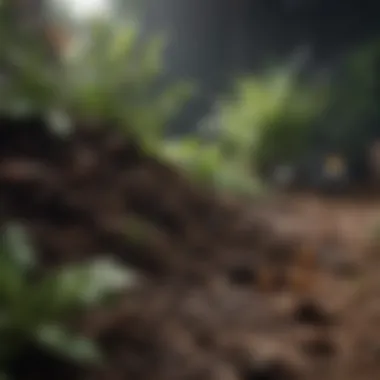
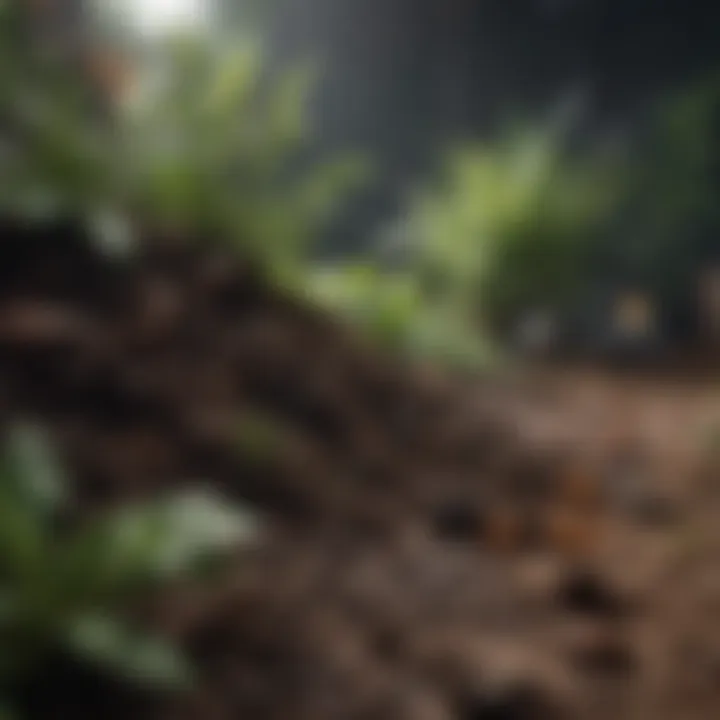
Finished compost serves many purposes in gardening, which makes it a versatile asset. Here are some ways you can apply it:
- Soil Amendment: Adding compost improves soil structure, aiding drainage and moisture retention. It allows plants to better access nutrients.
- Mulching: Compost can be spread on top of the soil to suppress weeds, moderate soil temperature, and retain moisture.
- Potting Mix: Combine compost with other materials to create nutrient-rich potting soil for indoor plants or container gardens.
These applications not only promote healthy plant life but also contribute to a more sustainable gardening practice. Using compost reduces the need for chemical fertilizers, which can have negative effects on the environment.
Improving Soil Health
One of the most significant benefits of utilizing finished compost is the improvement of overall soil health. Finished compost contains a variety of beneficial microorganisms and nutrients. When added to the soil, compost enhances:
- Microbial Activity: Good bacteria and fungi from compost help to break down organic matter, making nutrients available to plants.
- Nutrient Content: Compost provides essential nutrients such as nitrogen, phosphorus, and potassium, which are vital for plant growth.
- Soil Structure: Organic matter from compost improves soil aeration and water infiltration, making it easier for roots to grow.
It is important to note that not all compost is equal. Proper management during the composting process ensures that the final product is both safe and beneficial for soil health.
Enhancing Plant Growth
The role of finished compost in enhancing plant growth cannot be overstated. It provides a slow-release source of nutrients, which means plants can absorb them over time, promoting steady growth instead of growth spurts that may weaken plants. Here’s how compost aids in plant growth:
- Root Development: Healthy soil structure allows roots to penetrate deeper, accessing more nutrients and water.
- Disease Resistance: Beneficial microbes can help prevent diseases by outcompeting harmful pathogens in the soil.
- Drought Resilience: Compost's ability to retain moisture means that plants will be better equipped to withstand dry periods.
In summary, utilizing finished compost fosters an environment where plants can thrive. For health professionals, wellness coaches, and nutritionists, understanding the benefits of composting can emphasize the connection between gardening, nutrition, and sustainable practices.
"Healthy soil creates healthy plants that, in turn, contribute to healthy eating."
Through proper application and understanding of finished compost, you can improve not only your garden but also advocate for ecological sustainability.
Composting as a Sustainable Practice
Composting is a crucial aspect of sustainable living. It addresses many pressing environmental concerns, such as waste management and resource conservation. By transforming organic waste into nutrient-rich compost, individuals can reduce the amount of waste sent to landfills while enriching the soil and supporting plant growth.
People often overlook composting's role in tackling the waste crisis. Cities generate millions of tons of organic waste each year. This waste not only occupies valuable landfill space but also produces harmful greenhouse gases as it decomposes. Composting provides a viable solution, allowing individuals to take responsibility for their waste while benefitting their gardens and the environment.
Impact on Waste Reduction
The act of composting can have a significant impact on waste reduction. When organic material, such as food scraps and yard waste, are composted, they do not end up in landfills. According to estimates, approximately 30% of the waste that households produce is organic material. By utilizing a compost bucket, individuals can divert this waste from landfills, which is essential for reducing overall waste volume
Composting is not just about removing waste from the equation. It also creates a closed-loop system. The compost produced can be reused as fertilizer for plants and gardens, minimizing the need for chemical fertilizers that can be harmful to the environment. Hence, composting aligns with principles of sustainability by utilizing waste as a resource.
Here are some benefits of composting for waste reduction:
- Reduces landfill waste: Less organic material leads to smaller landfill sizes and lower operational costs.
- Decreases methane emissions: Composting prevents organic waste from producing methane, a potent greenhouse gas responsible for climate change.
- Educates communities: Engaging in composting can raise awareness about sustainable practices and environmentally responsible behaviors.
Contribution to a Circular Economy
The concept of a circular economy emphasizes the importance of reducing waste and reusing materials. Composting plays a vital role in this framework by ensuring that organic waste is cycled back into the environment efficiently. Rather than being disposed of, organic matter is repurposed, becoming a valuable resource that nourishes soil and plants.
Increased participation in composting can significantly contribute to the creation of a circular economy. It promotes sustainable agriculture practices, builds soil health, and enhances the resilience of ecosystems. When individuals and communities adopt composting, they support the principle of returning value to the ecosystem rather than following a linear model of production and waste.
Some ways composting contributes to a circular economy include:
- Resource efficiency: By creating compost from waste, society can reduce reliance on synthetic fertilizers and chemical inputs.
- Enhancing soil health: Compost enriches the soil, fostering biodiversity and improving the ecosystem's ability to regenerate.
- Supporting local food systems: Composting can encourage local food production, reducing dependency on long-distance transport and promoting sustainable farming practices.
"Composting not only benefits the environment but also transforms the way we think about waste and resources. It exemplifies how we can work towards a more sustainable and circular economy."
Resources for Further Learning
A key aspect of developing a small composting system is gaining knowledge. Understanding the intricacies of composting can significantly improve the success of your efforts. With composting, the journey is continuous; new ideas and techniques emerge regularly. Hence, accessing reliable resources is imperative. This section delves into various materials that can enhance your understanding and skills in composting.
Books and Guides
There is a wealth of literature on composting that can serve as a solid foundation for beginners and advanced composters. Books often provide depth, covering historical context, scientific principles, practical applications, and detailed step-by-step guides. Examples of valuable books on this subject include "The Composting Handbook" and "Let It Rot!". These texts provide comprehensive explanations and actionable advice, helping readers tailor their composting practices to their individual needs.
- "The Composting Handbook" offers in-depth knowledge on compost science. It explores microbial activity and decomposition processes, which can be crucial for refining one’s composting methods.
- "Let It Rot!" blends practical guidance with insightful anecdotes, making it approachable for many. It's useful for understanding the balancing act between green and brown materials.
These resources are not just theoretical; they inspire practical application. For those in health and wellness professions, books on composting can provide an understanding of how nutrient-rich compost positively affects soil health and crop production.
"The best way to learn is by doing, but it helps to have solid information to guide your efforts."
Online Courses
In addition to books, online courses offer structured learning experiences that can be extremely beneficial. Websites such as Coursera and Udemy have comprehensive courses about composting. These platforms present various approaches to composting, accommodating different lifestyles and environments.
- Courses often include video tutorials, interactive activities, and community forums, fostering a collaborative learning environment. This is advantageous for those seeking to connect with fellow composters.
- Online learning can also provide insights into challenges faced by others and strategies to overcome them. Learning from a diverse community can elevate personal composting practices.
For health professionals and wellness coaches, these courses can emphasize the linkage between composting and sustainable agriculture. Understanding these interconnections aids in conveying the broader implications of composting practices to clients and communities.
By engaging with these resources, individuals can cultivate a deeper comprehension of composting, promoting sustainable practices effectively.
Closure
In this article, we have explored the essential elements of initiating a small composting bucket. Composting may seem like a simple task, but it involves various considerations that contribute to its success. The conclusion serves as a reminder of why this practice is not just beneficial, but essential for anyone looking to enhance their gardening and make a positive impact on the environment.
One key point of emphasis is the benefits of composting itself. It reduces waste in landfills and transforms food scraps into nutrient-rich soil amendments. This helps in cultivating healthier plants which in turn supports a vibrant ecosystem. The contribution to waste reduction cannot be understated since it directly addresses environmental concerns pertinent to our modern society.
Also, the role of proper management and understanding the components of a compost system cannot be neglected. Successful composting involves balancing green and brown materials, ensuring adequate moisture, and sometimes involves troubleshooting issues that arise. By following the guidelines provided in the previous sections, anyone can effectively manage their composting bucket.
Ultimately, the practice of composting promotes sustainable habits. It inspires individuals to take part in a broader circular economy where waste is minimized, and resources are reused. By engaging in composting, one contributes not only to personal gardening practices but also to global environmental conservation efforts.
"Composting is not just about the compost; it's about caring for the earth and acknowledging our role in the ecosystem."



